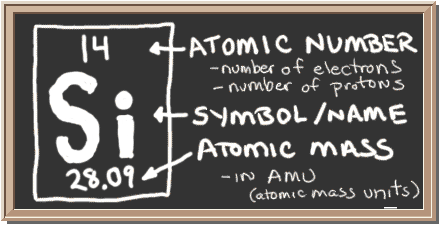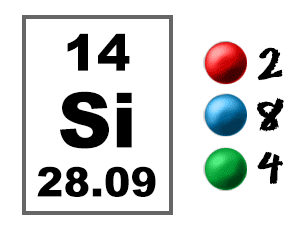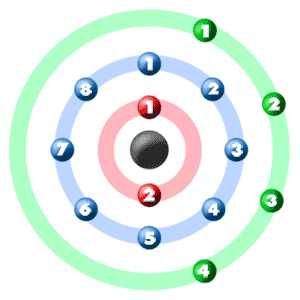
Check out the blackboard. That box on the left has all of the information you need to know about one element. It tells you the mass of one atom, how many pieces are inside, and where it should be placed on the periodic table.
In the next section we're going to cover electron orbitals or electron shells. This may be a new topic to some of you.
Electrons In The Shells
Take a look at the picture below. Each of those colored balls is an electron. In an atom, the electrons spin around the center, also called the nucleus. The electrons like to be in separate shells/orbitals. Shell number one can only hold 2 electrons, shell two can hold 8, and for the first eighteen elements shell three can hold a maximum of eight electrons. As you learn about elements with more than eighteen electrons you will find that shell three can hold more than eight. Once one shell is full, the next electron that is added has to move to the next shell.So... for the element of SILICON, you already know that the atomic number tells you the number of electrons. That means there are 14 electrons in a silicon atom. Looking at the picture, you can see there are two electrons in shell one, eight in shell two, and four in shell three.


Examples of Compounds with Silicon
Silicon DioxideSilicon dioxide is very much like carbon dioxide (CO2) in the way the electrons are shared. If you look at the periodic table, you'll see that silicon (Si) is directly below carbon (C). When elements are in the same column, they act in similar ways. So, silicon creates two double bonds with two separate oxygen (O) atoms. Look at the dot structure to see how the electrons are shared! |

|
|




